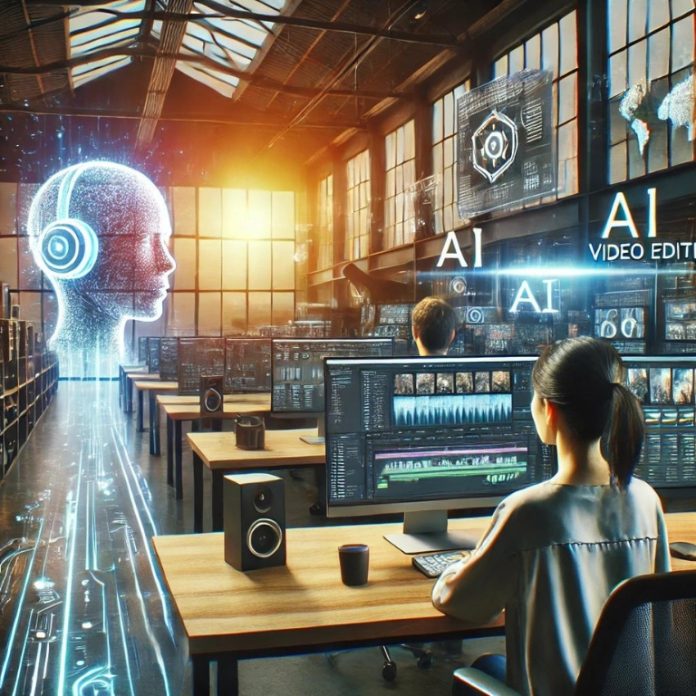Understanding AI Video Editing

Key Features of AI Video Editing Tools
AI video editing tools have revolutionised the way videos are created and edited. These tools use machine learning algorithms to automate tasks like trimming, cropping, and colour correction. This automation makes video editing faster and more efficient. Some advanced tools can even add special effects automatically, making them accessible to non-professionals.
Benefits of AI Video Editing
One of the main benefits of AI video editing is the significant reduction in time and effort required for post-production. These tools can handle complex tasks that would take hours for a human editor to complete. Additionally, AI video editing tools can produce consistent results, ensuring a high level of quality in the final product.
Popular AI Video Editing Software
There are several popular AI video editing software options available today. Adobe Premiere Pro’s Sensei AI and Magisto are two examples that offer automated features to simplify the editing process. These tools are designed to be user-friendly, making them ideal for both professionals and beginners.
Traditional Video Editing Techniques

Manual Editing Processes
Traditional video editing involves a lot of manual work. Editors have to go through hours of footage to find the best shots. They then cut and arrange these shots to tell a story. This process can be very time-consuming. Editors need to have a good eye for detail and a lot of patience. They also need to know how to use different editing tools and software.
Tools and Software for Traditional Editing
There are many tools and software available for traditional video editing. Some of the most popular ones include Adobe Premiere Pro, Final Cut Pro, and Avid Media Composer. These tools offer a wide range of features that allow editors to cut, arrange, and enhance video footage. However, they require a lot of skill and experience to use effectively.
Challenges in Traditional Video Editing
Traditional video editing comes with its own set of challenges. One of the biggest challenges is the amount of time it takes to edit a video. Editors often have to work long hours to meet deadlines. Another challenge is the need for high-end hardware and software, which can be expensive. Despite these challenges, traditional video editing is still widely used because it allows for a high level of control and creativity.
Comparative Analysis: AI vs. Traditional Video Editing

Efficiency and Speed
AI video editing stands out for its remarkable efficiency and speed. Traditional editing often requires hours of manual work, while AI can automate many tasks, significantly reducing the time needed. This allows creators to focus on other aspects of their projects. AI’s ability to quickly analyse data and address image and sound issues is a game-changer.
Cost Implications
When it comes to cost, AI video editing can be more affordable. By automating tasks, AI reduces the need for large teams and expensive equipment. Traditional editing, on the other hand, often involves higher costs due to the manual labour and resources required. This makes AI a cost-effective solution for many creators.
Quality and Precision
AI video editing tools are designed to deliver high-quality results with precision. They can analyse and adjust elements like colour and sound with great accuracy. Traditional editing relies heavily on the editor’s skill and experience, which can vary. While both methods can produce excellent results, AI offers a level of consistency that is hard to match.
Future Trends in Video Editing

Advancements in AI Video Editing
AI video editing is evolving rapidly. In the future, we might see smarter tools that understand what users want to create. These advancements will make video editing more accessible, allowing anyone to produce high-quality videos without needing special skills. AI’s role in video editing is set to grow significantly.
Integration of AI in Traditional Editing Workflows
As AI technology improves, it will be integrated more into traditional editing workflows. This means editors can work faster and more efficiently, combining the best of both worlds. AI can handle repetitive tasks, freeing up human editors to focus on creative aspects.
Predictions for the Future of Video Editing
The future of video editing looks promising with AI leading the way. We can expect new tools that make editing easier and more intuitive. Working together online will become more common, allowing teams to collaborate from anywhere. The impact of AI on video editing is only set to grow in the coming years.
Conclusion
In conclusion, both AI video editing and traditional editing have their own strengths and weaknesses. AI video editing is fast, cost-effective, and accessible to everyone, even those without special skills. It can handle repetitive tasks and save a lot of time. On the other hand, traditional editing offers more control and creativity, allowing editors to add a personal touch to their work. As technology advances, we might see a blend of both methods, combining the best of AI and human creativity. Whether you choose AI or traditional editing depends on your needs and preferences, but it’s clear that AI is changing the landscape of video production.











